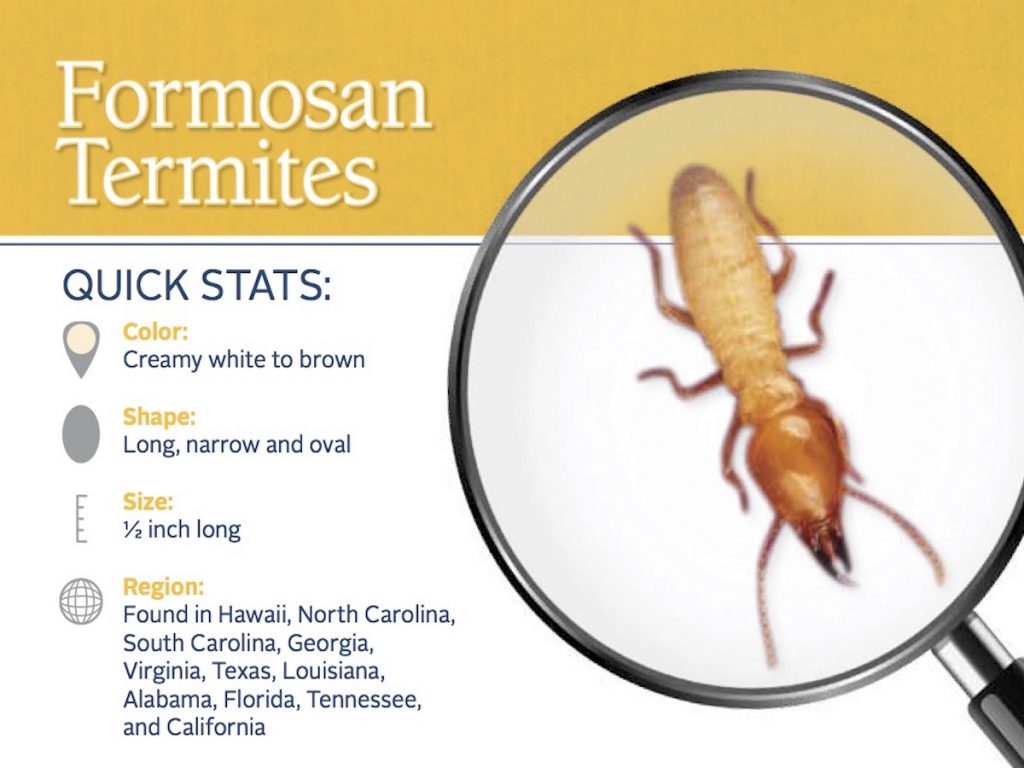Formosan termites are an invasive species that have recently infested Louisiana. These highly destructive pests can cause serious damage to wooden structures, leaving homeowners with costly repairs. This article will discuss the biology of Formosan termites, the signs of an infestation, and prevention and control methods. We will also provide helpful tips for homeowners on how to protect their homes from Formosan termite infestations.
Overview of Termites
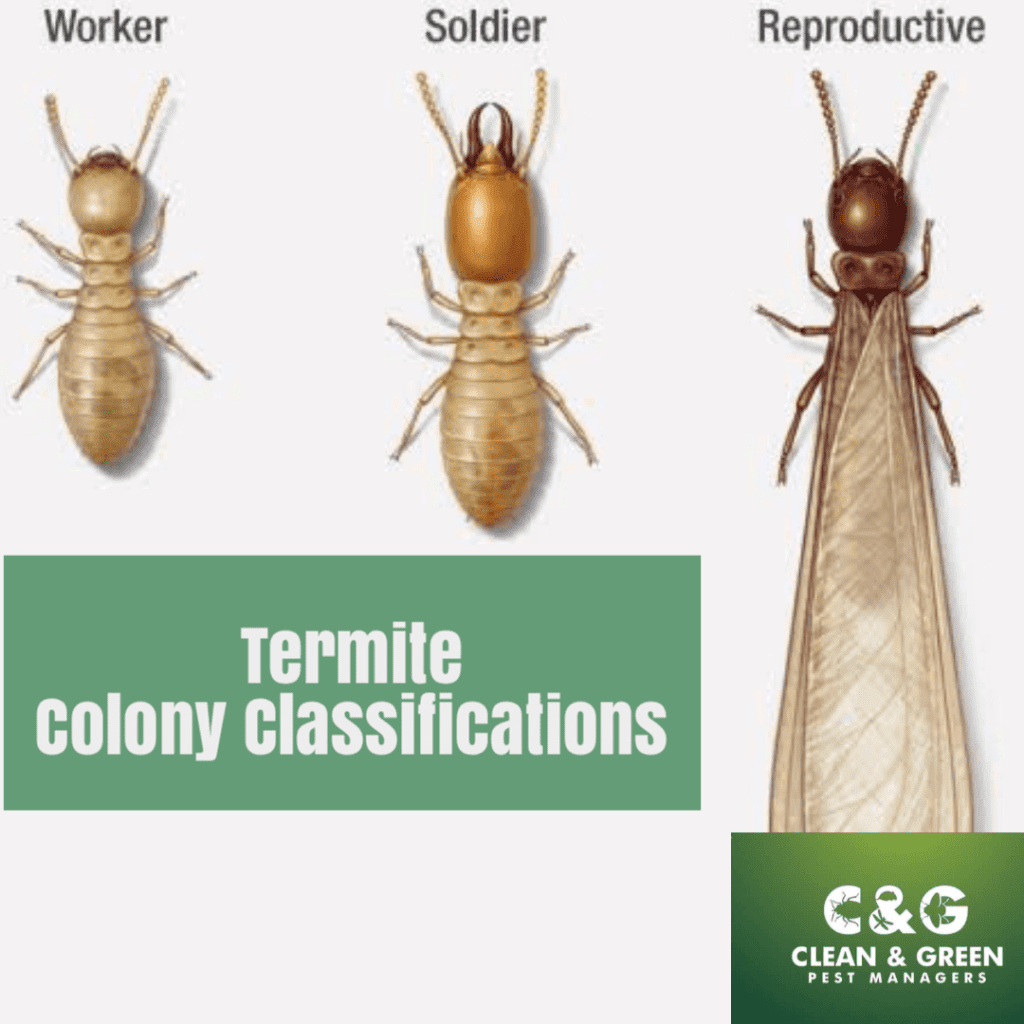
Termites are a type of social insect that is classified in the order Isoptera. They feed on wood and other materials, and form large colonies. Termites are found in tropical, subtropical, and temperate climates throughout the world and are considered to be a major pest in many regions.
Termites are social insects, meaning they live and work together in large colonies. The colonies are divided into three distinct castes: workers, soldiers, and reproductives.
- Workers: These are the smallest caste, and their main job is to find food, build and maintain the nest, and groom the other members of the colony.
- Soldiers: These are larger and more heavily armored than the workers. Their main job is to defend the colony from predators.
- Reproductives: These are the largest caste, and their job is to reproduce and form new colonies.
Formosan termites are a species of subterranean termite that is native to southeastern China and other parts of Asia. In recent years, they have become a major pest in the southeastern United States, particularly in Louisiana. The species is known for its aggressive behavior and its ability to cause significant damage to structures.
Types of Termites
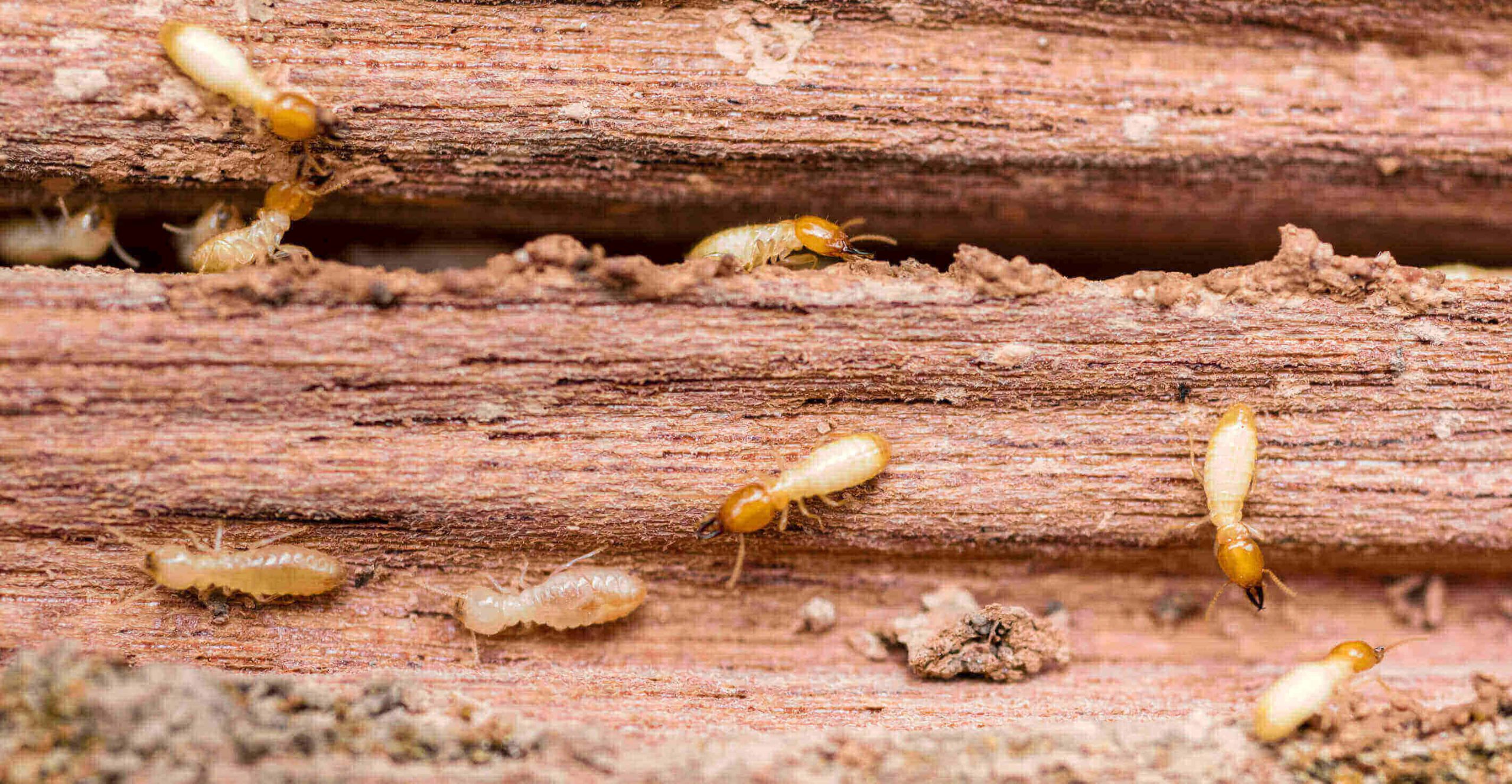
Termites are a type of social insect living in colonies and are grouped into three main categories: subterranean, drywood, and Formosan. Subterranean and drywood termites are the most common in the United States, while Formosan termites are found primarily in the Southern part of the United States, such as Louisiana.
| Type | Description |
|---|---|
| Subterranean | Live in underground colonies and build mud tubes to reach wood above ground. |
| Drywood | Live in wood and rarely in the soil. |
| Formosan | Live in colonies which can contain millions of termites, and they can even build nests above ground. |
Formosan Termites
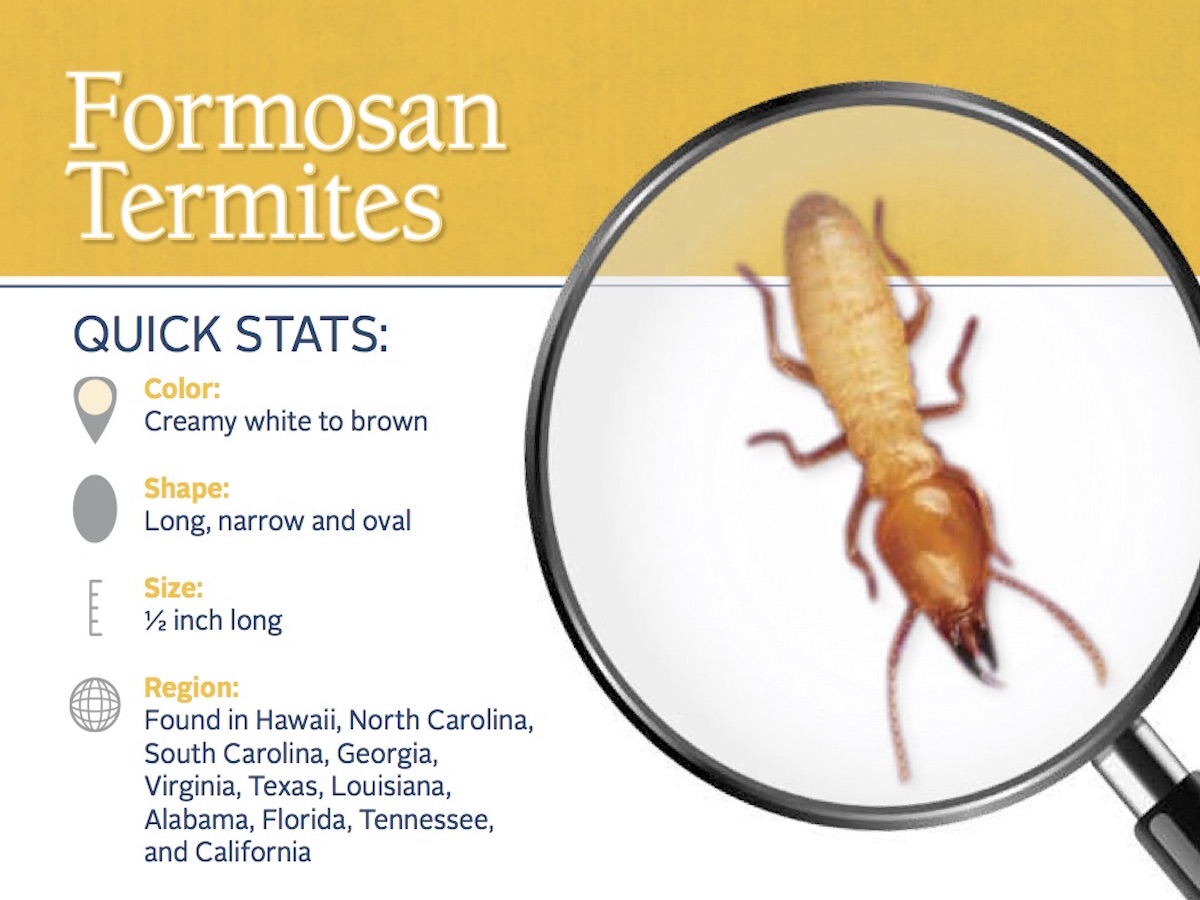
Formosan termites, also known as the “super termite”, are an invasive species originating from China and Taiwan. They are much more destructive than native termite species, and they can cause extensive damage to structures in a short period of time. Here in Louisiana, Formosan termites can be found in many urban and suburban areas, and they can spread quickly if left unchecked.
Formosan termites are most active during the warmer months, and they can cause significant damage to homes and other structures in a very short period of time. They are capable of damaging a structure in a year or less, and the cost of repairing the damage can be significant.
Below are some of the most important facts about Formosan termites:
- They are an invasive species originally from China and Taiwan.
- They can cause extensive damage to structures in a short period of time.
- They are most active during the warmer months.
- They can cause significant damage to homes and other structures in a year or less.
- Prevention is the best way to keep them from infesting your home or business.
In order to keep Formosan termites from infiltrating your home or business, it is important to take preventative measures. Make sure to inspect your property regularly, seal any cracks or openings in the foundation, and keep your landscaping trimmed and clean to reduce the risk of an infestation. If you suspect an infestation, contact a professional pest control company immediately to assess the situation and take the necessary steps to eradicate the problem.
Distribution of Formosan Termites

Formosan termites are native to Asia but have spread throughout other parts of the world. In the United States, they are most prevalent in the Gulf Coast region, particularly in Louisiana. Formosan termites were first identified in Louisiana in the late 1960s, and since then they have been found in other parts of the state. They have been located in areas such as New Orleans, Baton Rouge, and Lafayette.
Formosan termites are known to inhabit homes, businesses, and other structures, as well as trees and other plants. They are able to thrive in moist and humid environments, so they are commonly found in areas with high humidity levels and near bodies of water. They can also survive in dry climates, so they are not limited to coastal areas. Because of their wide range of habitats, Formosan termites are considered to be the most destructive species of termite in the United States.
Formosan termites can cause significant damage to wooden structures, and can even damage other materials such as plastic, rubber, and asphalt. They feed on cellulose found in wood, and can quickly cause extensive damage to buildings and other structures. Formosan termites can also cause damage to trees and plants, and can even strip bark from trees, which can cause them to die.
Formosan termites are a major problem in Louisiana, and it is important to take preventative measures to protect your home and business from these pests. If you suspect that you have an infestation, it is important to contact a professional pest control service immediately to get rid of the termites and prevent further damage.
Formosan Termites in Louisiana
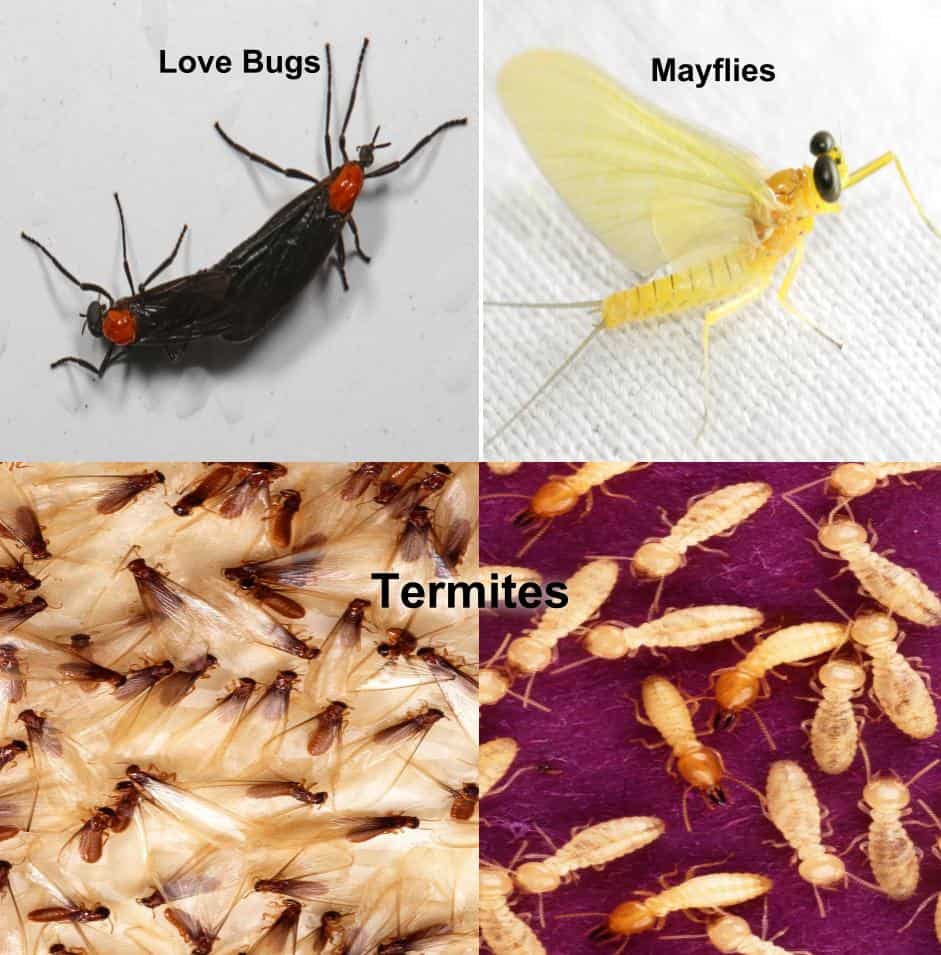
Formosan termites are a species of subterranean termite native to China. They have become an increasingly serious problem in the U.S., especially in Louisiana. These invasive termites can cause extensive damage to homes and other structures, and they are difficult to eradicate.
Formosan termites enter the state via ships carrying cargo from Asia, and once they reach land, they can spread quickly. They reproduce rapidly and live in large colonies, which can reach up to several million members.
Formosan termites can cause more damage than native termite species because they have larger colonies and reproduce faster. They feed on a wide variety of materials, including wood, paper, insulation, and plastic. They can also eat through concrete and steel.
Formosan termites can be difficult to identify due to their similarity to other species. They are typically light brown or yellowish in color and measure 1/4 to 1/2 inch long. Additionally, they create mud tubes to travel between their nests and food sources, and these tubes are often visible on the outside of infested buildings.
The best way to prevent Formosan termites in Louisiana is to keep them from entering the state in the first place. Home and business owners should inspect any wooden materials that come from outside the state for signs of infestation.
In addition, pest control professionals can provide treatments that are designed to keep Formosan termites from entering a structure and to eliminate existing colonies. These treatments may include baiting, spraying, and fumigation.
- Formosan termites are an invasive species native to China that can cause significant damage to homes and other structures
- They enter the state via ships carrying cargo from Asia and spread quickly once they are on land
- Formosan termites can feed on a wide variety of materials and can even eat through concrete and steel
- They are typically light brown or yellowish in color and measure 1/4 to 1/2 inch long
- The best way to prevent Formosan termites in Louisiana is to inspect any wooden materials from outside the state for signs of infestation
- Pest control professionals can provide treatments that are designed to keep Formosan termites from entering a structure and to eliminate existing colonies
Impact of Formosan Termites in Louisiana
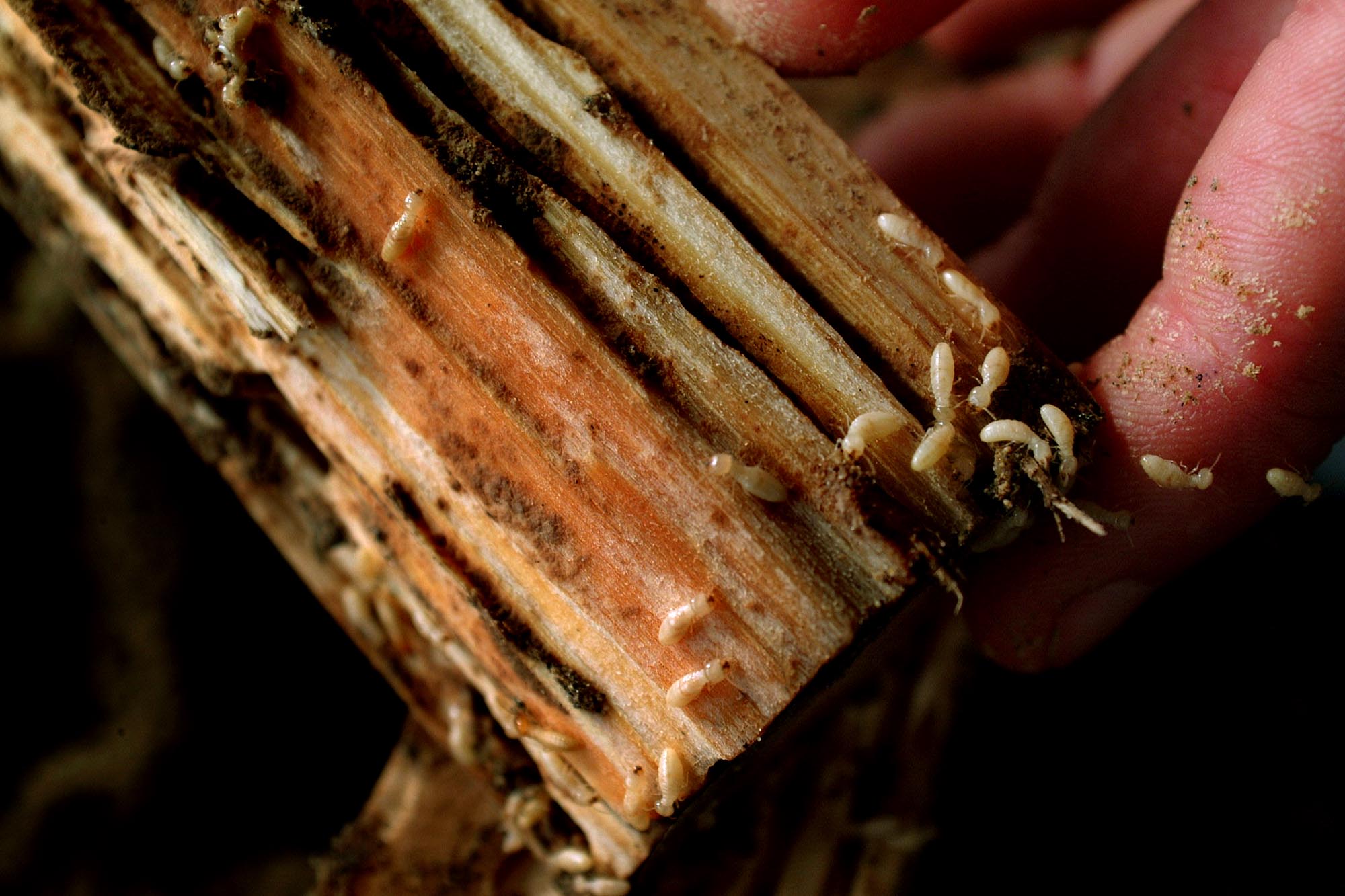
Formosan termites are a non-native species of termite found in Louisiana that can cause significant damage to wood structures. These termites are particularly damaging because of their aggressive behavior, high numbers, and ability to quickly consume wood. Formosan termites can cause severe structural damage to homes and other buildings, resulting in costly repairs and replacements.
The most common areas of Louisiana affected by Formosan termites are the coastal areas of New Orleans, Baton Rouge, and Lafayette. These termites can also spread to other areas of the state, however, and can even survive in colder climates.
Formosan termites feed on wood and cellulose materials, such as cardboard, paper, and fabric. They can also consume other material, such as plastic and metal. In addition to structural damage, Formosan termites can cause damage to furniture, flooring, and other items made of wood or cellulose.
Formosan termites can also cause damage to trees and other plants in the area. They can weaken trees and cause them to become more susceptible to disease, weather extremes, and other pests.
The most effective way to prevent and control Formosan termites is to use a combination of chemical and non-chemical methods. These include eliminating wood and cellulose debris near the home, eliminating damp or wet areas near the foundation, using baiting systems, and using chemical treatments.
| Location | Damage |
|---|---|
| New Orleans | Structural damage |
| Baton Rouge | Structural damage |
| Lafayette | Structural damage |
| Other Areas | Spread |
| Wood & Cellulose Materials | Feed on them |
| Trees & Plants | Weaken them |
| Prevention | Baiting systems, chemical treatments |
Prevention and Control of Formosan Termites in Louisiana
Formosan termites are a destructive species of subterranean termite that originate from Asia and have become an increasingly common pest in Louisiana. The termites cause significant damage to homes, businesses and other structures, and can be difficult to control. Therefore, it is important to take preventative measures to avoid an infestation and to know how to effectively combat an existing problem.
Prevention
- Inspect regularly for signs of infestation, including mud tubes, discarded wings and wood damage.
- Reduce moisture levels as much as possible by repairing leaky faucets, clearing gutters and downspouts, and avoiding overwatering of lawns.
- Remove any wood sources in contact with the ground, such as wood mulch or tree stumps.
- Keep wood piles away from the foundation of the home or building.
- Seal cracks and crevices in walls, foundations and other areas of the structure.
- Apply a perimeter barrier of insecticide around the home or structure.
Control
- If an infestation is identified, contact a professional pest control company as soon as possible.
- In some cases, baiting with insecticide may be needed to effectively eliminate the infestation.
- In more severe cases, more intensive treatments such as soil treatments or direct wood treatments may be needed.
- Follow the instructions of the professional pest control company to ensure effective and safe treatment.
- Continue to monitor for signs of termite activity, even after treatment.
Formosan termites can cause extensive damage to structures if left untreated. It is important to take preventative measures to avoid an infestation and to know how to effectively combat an existing problem. By regularly inspecting for signs of infestation and taking the necessary steps to reduce moisture and eliminate wood sources, you can help to protect your home or business from Formosan termites.
Frequently Asked Questions
1. What are Formosan Termites and How Do They Differ From Other Species of Termites?
Formosan termites are a species of subterranean termites native to China, Taiwan, and Japan. They are considered one of the most destructive species of termites, as they have the potential to cause significant damage to structures and trees.
Formosan termites differ from other species of termites in several ways:
- They are more aggressive and reproduce faster than most other species of termites.
- They form larger colonies with up to several million individuals.
- They can travel long distances in search of food sources.
- They are difficult to control with traditional methods due to their large colonies and aggressive behavior.
- They can cause more serious and costly damage to structures and trees than other species of termites.
2. What areas of Louisiana are most prone to Formosan termite infestations?
Formosan termites are found throughout Louisiana, but are most prevalent in the following areas:
- The Greater New Orleans area
- Baton Rouge
- Slidell
- Metairie
- Houma
- Hammond
- Lake Charles
- Shreveport
- Alexandria
Formosan termites are especially active in areas with high humidity and temperatures, such as those found in the coastal and low-lying areas of Louisiana. The presence of nearby bodies of water, such as rivers and lakes, also increases the likelihood of Formosan termite infestations.
3. How can I tell if I have a Formosan termite infestation?
Formosan termite infestations can be difficult to spot and often go unnoticed until significant damage has already been done. If you suspect you may have Formosan termites in your home, there are several signs you can look for:
- Winged termite swarmers. Formosan termite swarms are usually seen in the spring or summer and look similar to flying ants.
- Mud tubes. Formosan termites build mud tubes on the outside of wood, concrete, and other surfaces to protect themselves from predators and to create a humid environment.
- Damaged wood. Formosan termites feed on wood and can cause significant damage to wooden structures, furniture, and other items.
- Discarded wings. After mating, Formosan termites will shed their wings, which can be found in piles near the nest or entry points.
If you suspect you have a Formosan termite infestation, it is important to contact a pest control professional as soon as possible. They will be able to identify the species of termite and recommend a treatment plan to get rid of the infestation.
4. What are some methods of protecting my home from Formosan termite infestation?
- Preventing moisture build-up around the home and eliminating any standing water sources.
- Making sure the home is properly sealed and caulking any cracks or crevices.
- Installing a physical termite barrier, such as a metal or plastic mesh.
- Using a chemical barrier, such as a soil treatment or foundation treatment.
- Regularly inspecting the home for signs of termite activity.
5. Is there a way to treat an existing Formosan termite infestation?
Yes, there are several ways to treat an existing Formosan termite infestation. These treatments can be divided into two main categories: chemical and non-chemical.
- Chemical Treatments: Chemical treatments involve the use of pesticides and other chemicals to kill the termites and their colonies. This can be done through spot treatment, in which the pesticide is applied directly to the infested area, or through a full-structure fumigation, in which the entire building is treated with the pesticide.
- Non-Chemical Treatments: Non-chemical treatments involve the use of baiting systems or physical barriers to prevent the termites from accessing the structure. Baiting systems use bait to attract and kill the termites, while physical barriers such as concrete or metal barriers are installed around the perimeter of the building to keep the termites from entering.
It is important to note that the treatments for Formosan termites are often more expensive and time-consuming than those for other types of termites. It is also important to seek professional assistance when attempting to treat an existing infestation, as the treatments can be dangerous, and the wrong application of chemicals can be detrimental to your health and the environment.
Conclusion
The Formosan termites are a major problem for homeowners in Louisiana, as their presence can cause extensive damage to structures. The best way to protect your home from an infestation is to be proactive and take the necessary steps to prevent them from entering your home. These include removing any sources of moisture that can attract the termites, sealing off any potential entry points, and regularly inspecting your home for signs of an infestation. Additionally, you should also contact a termite control professional to properly treat and remove any existing infestations. Taking these steps can help you protect your home from the damaging effects of Formosan termites.

